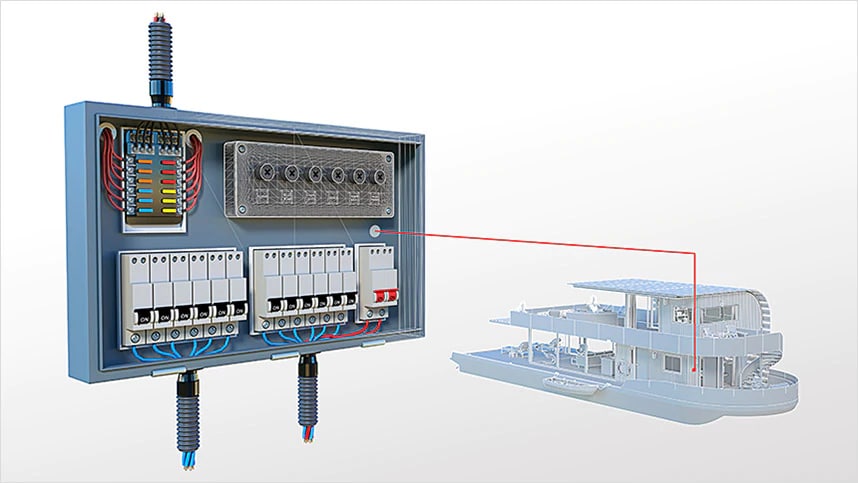Tailored Electrical Load Calculation Services for Commercial and Industrial Facilities
Tailored Electrical Load Calculation Services for Commercial and Industrial Facilities
Blog Article
Cutting-edge Electric Design Solutions for Modern Framework
As city atmospheres grow increasingly complicated, integrating modern technologies such as clever grids and eco-friendly energy sources comes to be extremely important. These innovations not only promise to maximize energy intake yet also foster resilience against future demands.
Importance of Innovative Electrical Design
Innovative electric design plays an important function in modern framework, influencing not just efficiency however likewise sustainability. As cities evolve and the demand for power rises, the need for advanced electric systems ends up being critical. These systems should not just fulfill existing needs but additionally prepare for future growth and technological advancements.
A well-executed electrical design can considerably minimize power consumption, therefore lowering functional expenses and decreasing environmental impact. By including renewable power resources, such as photovoltaic panels and wind generators, ingenious designs can enhance power independence and durability. Smart grid modern technologies allow for real-time tracking and management of energy distribution, optimizing efficiency and decreasing waste.
Safety is an additional essential aspect of electrical design. Implementing sophisticated modern technologies and extensive standards can minimize risks associated with electric failures, making sure a protected atmosphere for citizens and companies alike. In addition, ingenious styles assist in adaptability, allowing infrastructures to integrate arising modern technologies flawlessly.
Secret Patterns in Electric Design
As the landscape of electric design remains to advance, a number of crucial trends are shaping the future of the industry. One significant trend is the assimilation of clever modern technology right into electric systems. The spreading of the Internet of Points (IoT) has allowed real-time surveillance and control of electric devices, enhancing efficiency and promoting anticipating upkeep.
One more trend is the expanding focus on modular design. This approach allows for scalable and flexible options, allowing framework to adapt to changing needs without substantial improvements. Furthermore, making use of advanced simulation tools and Structure Details Modeling (BIM) is becoming progressively common, streamlining the design procedure and improving collaboration among stakeholders.
In addition, advancements in materials scientific research are causing the development of lighter, more sturdy, and energy-efficient elements. This development is especially important for high-performance buildings and facilities jobs.
Last but not least, there is a significant shift in the direction of data-driven decision-making - electrical load calculation. Leveraging data analytics aids developers optimize systems for efficiency and cost-effectiveness. Together, these fads signify a transformative period in electrical design, enhancing performance, sustainability, and durability in contemporary facilities
Sustainable Power Solutions
Sustainable power options are significantly becoming a vital focus in electrical design, showing a more comprehensive commitment to ecological duty and source efficiency. These options aim to reduce environmental effect while optimizing energy usage in different frameworks, from domestic structures to large business centers.
One of the leading techniques entails the assimilation of eco-friendly energy resources, such as photovoltaic panels and wind generators, right into electrical systems. This not only decreases dependency on nonrenewable fuel sources but additionally enhances energy resilience. In addition, cutting-edge power storage space systems, such as innovative batteries, allow reliable administration and distribution of power, making sure that surplus energy generated throughout top manufacturing can be used throughout high demand durations.
Furthermore, energy-efficient design techniques are being taken on to enhance overall system performance. This includes using energy-efficient lighting, a/c systems, and wise building technologies that keep an eye on and adjust energy usage based on occupancy and ecological conditions.
Smart Grid Technologies
The implementation of lasting power options normally brings about the exploration of smart grid technologies, which play a crucial duty in modernizing electric systems. Smart grids leverage progressed interaction modern technologies and information analytics to boost the dependability, performance, and sustainability of electricity circulation. By integrating electronic innovation with typical grid infrastructure, these systems official website promote real-time tracking, automated control, and boosted decision-making capabilities.
Among the essential features of wise grids is their capability to accommodate renewable resource sources, such as solar and wind power. This flexibility not only reduces reliance on fossil gas yet additionally enables an extra decentralized power production version. Furthermore, clever grids make it possible for need action programs, where consumers can adjust their energy use based upon real-time rates, consequently advertising energy conservation and decreasing peak load demands.
Additionally, clever grid innovations boost grid resilience by allowing quicker recognition and resolution of failures, ultimately lessening downtime. With anticipating upkeep and analytics, utilities can enhance and enhance operations solution delivery. As neighborhoods and cities proceed to evolve, smart grid innovations are important for developing a lasting and efficient electrical framework that satisfies the demands of modern society.

Future-Proofing Facilities
To ensure long-lasting practicality and adaptability, future-proofing facilities is important in the quickly evolving landscape of electrical design services. As modern technology advancements and power demands shift, it is vital that electrical systems are developed with versatility in mind. This involves incorporating scalable options that can fit future upgrades without necessitating considerable overhauls.

Additionally, sustainability must be a cornerstone of future-proofed designs. Utilizing renewable resource sources, such as solar and wind, and visit this site maximizing power effectiveness lower dependence on fossil gas, aligning with worldwide initiatives to combat climate adjustment.
Final Thought
By prioritizing effectiveness, flexibility, and sustainability, these services attend to the developing demands of energy systems. The assimilation of wise grid innovations and sustainable power services boosts durability and reduces functional costs.
A well-executed electrical design can dramatically lower power consumption, therefore lowering operational expenses and decreasing ecological influence. By including eco-friendly power sources, such as solar panels and wind turbines, ingenious styles can enhance energy freedom and strength. Additionally, ingenious power storage systems, such as advanced batteries, allow reliable management and circulation learn the facts here now of power, ensuring that excess energy generated throughout peak production can be made use of during high demand periods.
Clever grids allow need response programs, where consumers can adjust their power use based on real-time pricing, therefore advertising energy preservation and lowering peak lots needs. (electrical load calculation)
As modern technology breakthroughs and power demands change, it is vital that electric systems are developed with adaptability in mind.
Report this page